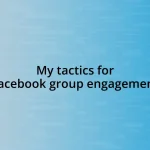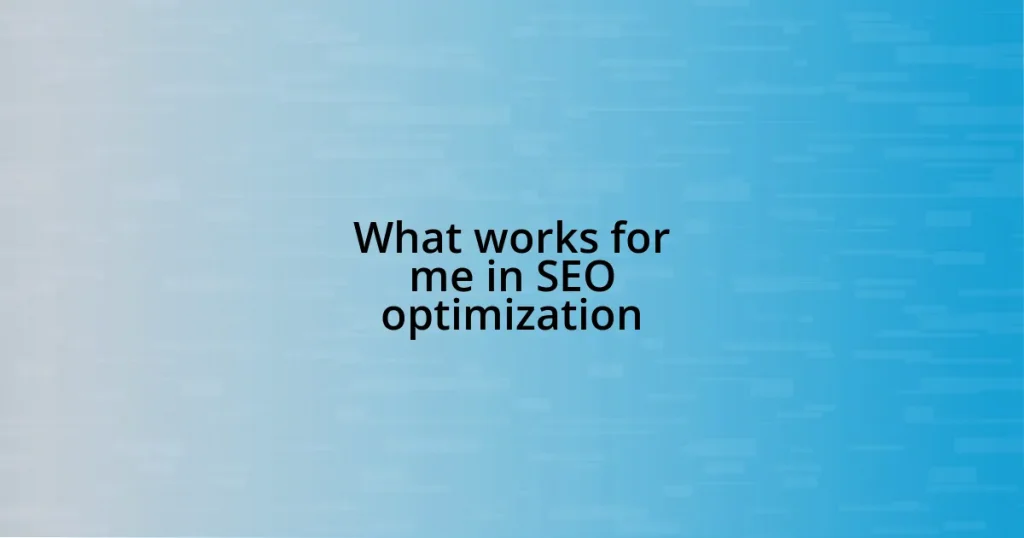Key takeaways:
- Dynamic pricing adjusts ticket costs in real-time based on demand, enhancing consumer urgency to purchase.
- Understanding factors like demand, competition, and perceived value is crucial for effective ticket pricing strategies.
- Communicating value through storytelling and transparency can elevate customer connection and justify higher prices.
- Tiered pricing allows for flexibility, catering to diverse budgets and improving overall attendee experience.

Understanding Ticket Pricing Strategies
When I think about ticket pricing strategies, I can’t help but remember how challenging it was during my first event as an organizer. I had to carefully consider factors like demand, competition, and value proposition, which often felt overwhelming. Why do some events sell out while others struggle? It often boils down to how well the prices reflect the perceived value of the experience.
Another aspect that stands out to me is the impact of dynamic pricing. This strategy changes ticket prices in real time based on demand. I once attended a concert where the ticket price skyrocketed as the show date approached, leaving me questioning if I’d prioritised my purchase enough. It’s fascinating how much consumer behavior can influence pricing strategies, isn’t it?
Additionally, I find that tiered pricing can offer flexibility to both organizers and attendees. By providing various price levels, everyone can find something that fits their budget. I remember feeling excited when I discovered a VIP package for a conference that came with exclusive benefits—it really transformed my experience! Ultimately, understanding these nuances helps create a more tailored approach to pricing, which can elevate the overall event experience.

Factors Influencing Ticket Prices
One of the most critical factors influencing ticket prices is demand. I remember attending a music festival that sold out within hours, and the ticket prices skyrocketed shortly after. It’s fascinating how the buzz around artists or events can drive consumers to snatch up tickets, often at premium prices, which only reinforces the proverb that “supply and demand” remains a timeless principle in the world of pricing.
Competition is another significant player when it comes to setting ticket prices. I once had a tough decision to make for a local theater production; there were two competing shows on the same night, each vying for audience attention. It was interesting to see how one show adjusted its prices downward to attract more people, while the other held steady, confident in its unique offering. Watching their differing approaches made me realize just how much market competition shapes pricing strategies.
Lastly, the perceived value of an experience can’t be overlooked. I recall attending a workshop that offered a certificate upon completion, justifying its higher ticket price in my mind. It left me feeling that the investment was worthwhile because of the value I received. Setting ticket prices that resonate with the audience’s expectations and the unique benefits of the event is essential for drawing in participants and ensuring satisfaction.
| Factor | Influence on Ticket Prices |
|---|---|
| Demand | Higher prices during peak demand, lower at off-peak |
| Competition | Adjustments in pricing to attract attendees from rival events |
| Perceived Value | Pricing influenced by the unique benefits and experiences offered |

Analyzing Market Demand Trends
When analyzing market demand trends, I often think about the patterns I’ve observed across different events. For example, I remember attending a popular art exhibition on opening night. The atmosphere was electric, and the tickets sold like hotcakes. It struck me how factors like time of year, local events, and even weather can significantly sway demand, often leading to unexpected sell-outs. Every time I take a step back and consider these trends, it becomes clear how crucial they are for effective pricing.
- Identifying peak demand periods, such as holidays or major local events, is essential for setting prices.
- Analyzing past events helps forecast future demand; I’ve seen first-hand how a successful series can create a loyal audience base.
- Consumer sentiment also plays a role—if the buzz around an event is high, demand naturally increases.
In my experience, staying on top of these trends allows for more strategic ticket pricing. Just last summer, I witnessed firsthand how a food festival effectively used social media to gauge interest levels, adjusting their ticket prices as buzz built up. They even offered early-bird pricing that capitalized on initial enthusiasm, which I found to be a smart incentive for attendees to commit early. It’s these small, thoughtful adjustments based on demand trends that can make a lasting impact on ticket sales and overall event success.

Competitive Analysis of Ticket Pricing
Understanding the dynamics of competitive ticket pricing has always intrigued me. I recall a time when I was torn between two concerts—one from a legendary band and another from an up-and-coming artist. The well-established band had ticket prices reflecting their fame, while the newcomer offered a more accessible rate. This made me wonder: does the allure of a familiar name always justify a higher price, or can lesser-known acts resonate with audiences willing to take a chance on something new?
Moreover, I’ve seen firsthand how certain events purposely undercut their competitors to fill seats. Last summer, I went to a local fair that adjusted its prices after noticing a nearby festival was drawing larger crowds. I found it fascinating how quickly they could pivot; they offered family packages and community discounts that not only got people through the gates but also fostered a sense of local pride. This experience made me realize that flexibility in response to market competition can be a game changer.
I also think about the emotional rollercoaster of pricing strategy. I’ve participated in events where ticket prices fluctuated dramatically as the date approached. The anticipation built as the countdown began, but so did the anxiety—what if I waited too long and missed out? It’s moments like these that highlight the psychological aspect of ticket pricing. Are we willing to pay a premium to be part of something special? This question often drives my perspective on how competitors can influence ticket pricing in ways that resonate with potential attendees.

Implementing Dynamic Pricing Models
Implementing dynamic pricing models has become a game changer in the world of ticket sales, and I’ve noticed how it takes a certain level of finesse. I remember attending a tech conference where the ticket prices changed daily based on demand and remaining inventory. It was fascinating to watch individuals weigh their options—should they buy now before prices go up or risk missing out on a stellar lineup of speakers? This uncertainty often nudges people to act quickly, which adds an exhilarating layer to the purchasing experience.
One strategy I’ve encountered involves analyzing real-time data during the ticket-selling period. At a sports event I attended, the organizers monitored ticket sales closely and adjusted prices in response to real-time interest, filling seats in crucial areas by offering discounts on less desirable sections. I found this incredibly clever. It allowed them not only to maximize revenue but also to fill the stadium by creating a sense of urgency. Have you ever felt that rush when you snag a deal just before tickets sell out? That’s the magic of dynamic pricing at work.
Moreover, communication plays a pivotal role in this model. I once saw an arts festival embrace transparency by sharing their pricing strategy on social media, engaging potential attendees in the process. They explained that ticket prices might rise as seats filled, which encouraged early purchases while making people feel part of the decision-making process. This open dialogue can really transform the buyer’s emotional journey. Don’t you think that’s empowering? Giving customers a heads-up about potential price changes turns the ticket-buying experience into a shared adventure, making them feel more connected to the event overall.

Communicating Value to Customers
When it comes to communicating value to customers, I find that storytelling really makes a difference. I can’t help but think back to a local theater production I attended. The promotional material didn’t just list the price of tickets—it painted a picture of the experience. The director interviewed cast members on social media, giving glimpses of their passion and creativity. By sharing their journey and the value of what they were presenting, it transformed the price from a simple number into part of a larger narrative, making me feel more connected to the event.
When considering value, I’ve observed that exclusivity can also play a significant role. Recently, I saw a music festival offer VIP packages that included meet-and-greet opportunities with the artists. While the price was steep, the chance to interact with performers changed the way potential attendees perceived the value of those tickets. Have you ever felt drawn to something because it felt special or limited? That allure can be incredibly persuasive and can justify higher price points in customers’ minds.
Furthermore, clarity in communication is essential. I remember buying tickets for a workshop that provided a detailed breakdown of what the price included: materials, access to recorded sessions, and even refreshments. With that complete picture, I felt confident in my purchase. It was as if the organizers were saying, “Here’s exactly what you’re getting for your money.” Do you see how transparency can enhance trust? By being open about what attendees are paying for, you create a stronger relationship with your audience, ensuring they understand and appreciate the value behind the price tag.















